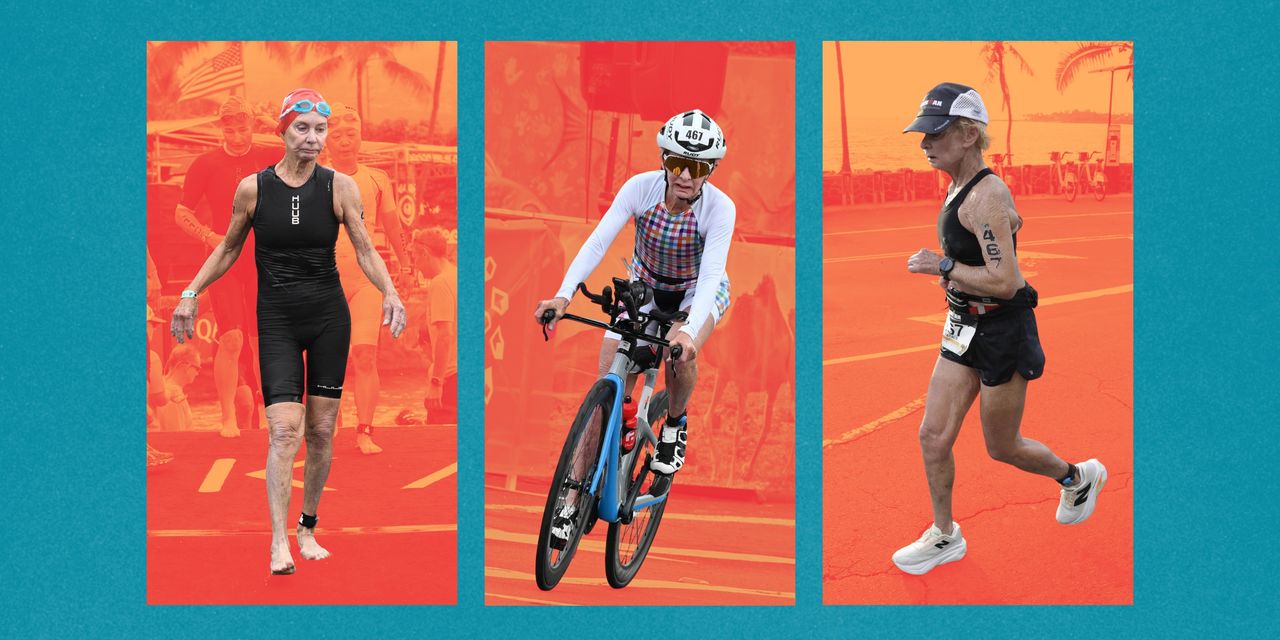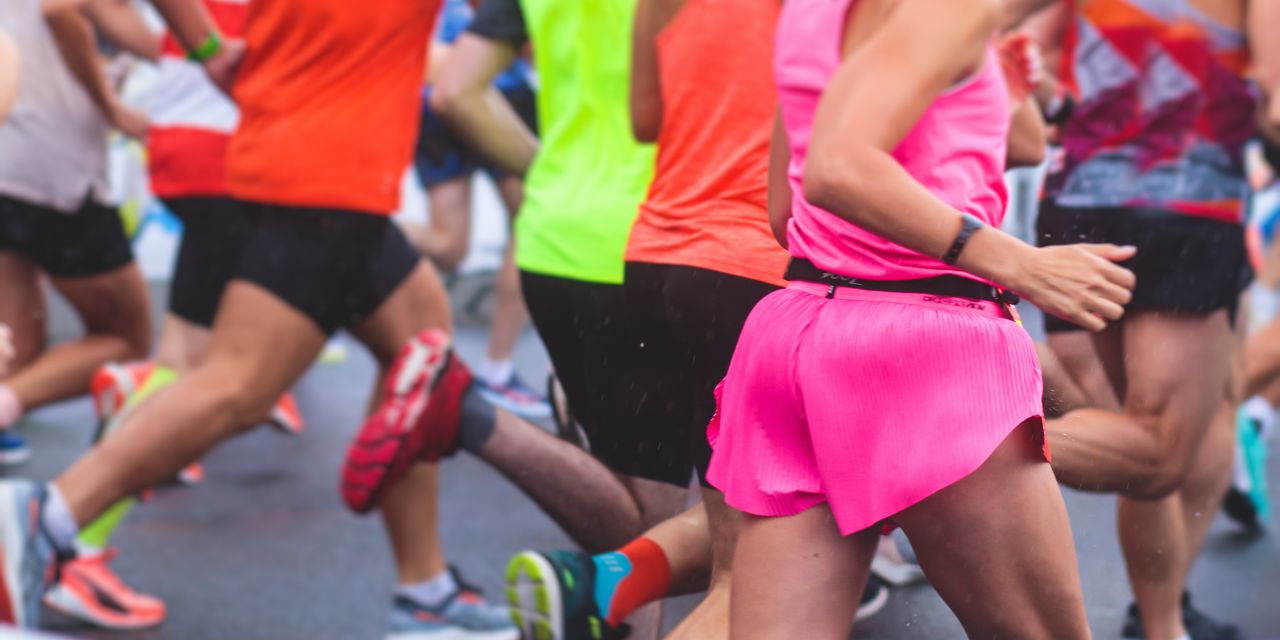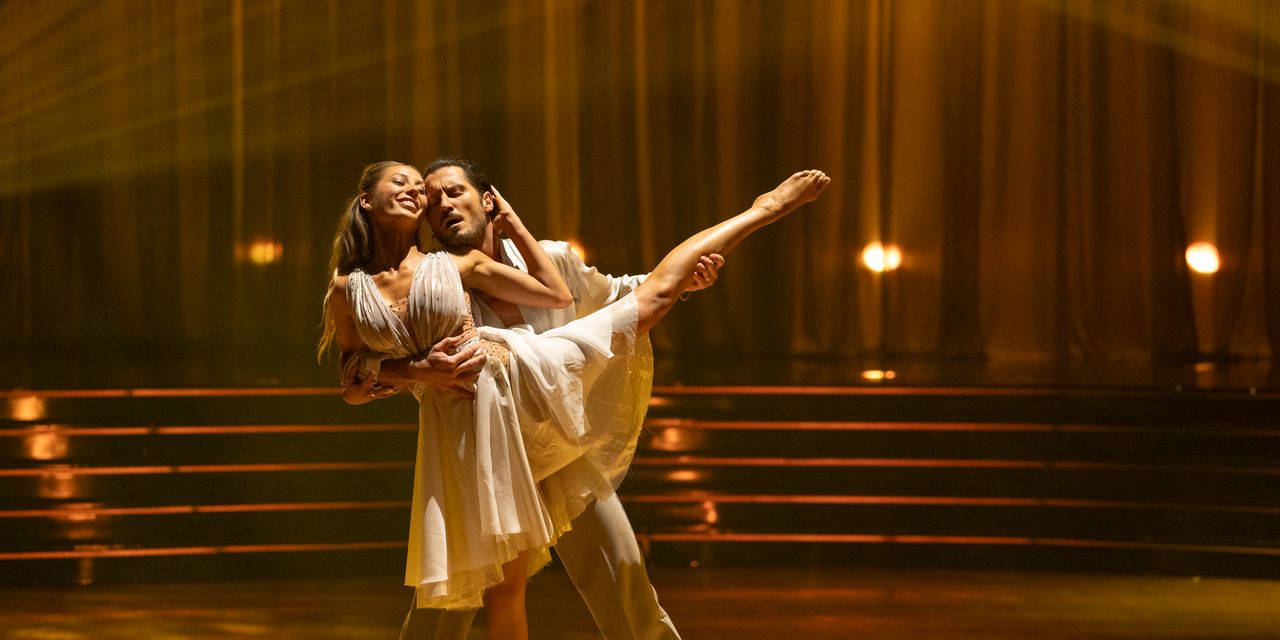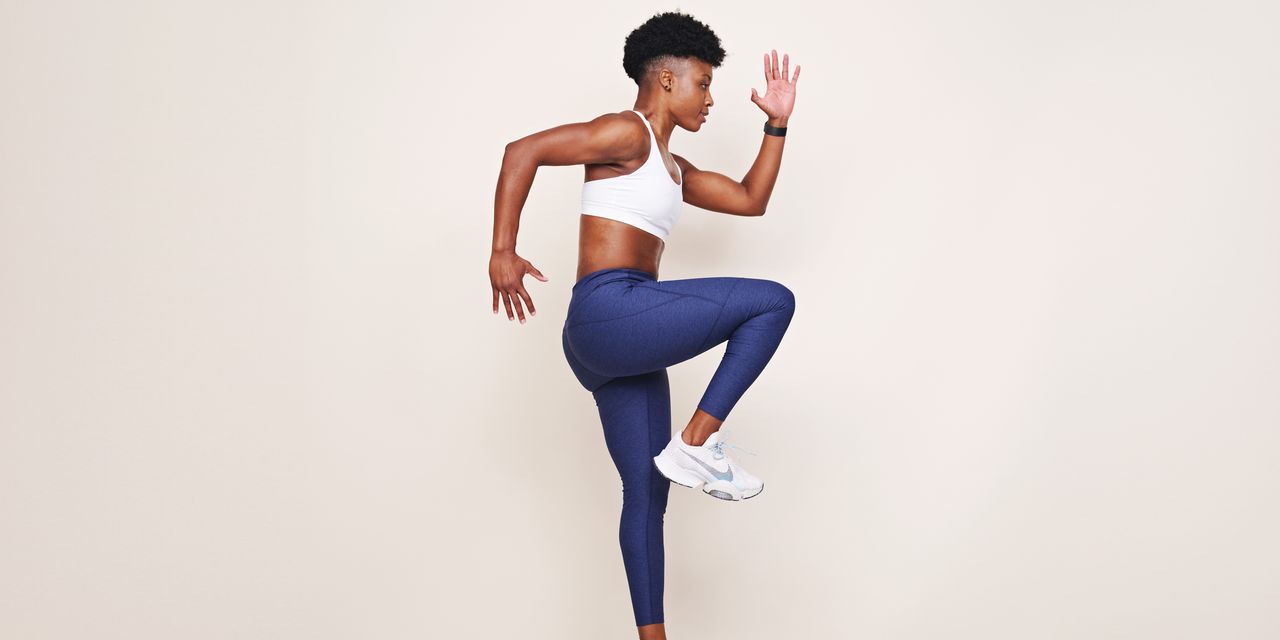Have Wide Feet? Us Too. These Are the Walking Shoes We Swear By

If you’re a regular stroller who often feels like your sneaks are fighting against your feet, take it from us: Shopping for the best walking shoes for wide feet now can save you a lot of discomfort (and frustration) later on. “Don’t really expect to break in [the width of] a fitness shoe,” April Borchardt, DPM, a podiatrist and foot and ankle surgeon at Prevea Ashwaubenon Health Center in Green Bay, Wisconsin, tells SELF. “If it’s uncomfortable and too tight in the store, it won’t feel good with exercise.”
Luckily, lots of podiatrist- and SELF editor-approved brands (including Hoka, Brooks, and New Balance) make wider walking shoes that’ll feel comfy right out of the box. Here, we found the best pairs you can try and spoke to experts about the most important features to look for while you browse.
Our top picks
- Best Overall: Brooks Adrenaline GTS 24, $140
- Runner-Up: Altra Paradigm 7, $170
- Best Max Cushioning: Hoka Gaviota 5, $175
- Best Budget Pick: Ryka Devotion X Max,
$110$78 - Most Width Options: New Balance 990v6,
$200$191 - Best for Plantar Fasciitis: Brooks Ghost 16,
$140$100 - Best for Stability: Asics GT-2000 13, $140
- Best for Standing All Day: Dr. Scholl’s Feel Good Sneaker, $130
- Best Casual Sneaker: Adidas Gazelle, $120
- Best Sandal: Birkenstock Arizona Soft Footbed Sandals, $169
- Best Clog: Rothy’s Casual Clog, $160
Dr. Borchardt says there’s no one-size-fits-all shoe for wide feet, so don’t worry if you have to try a few different pairs before you find the right one. Our picks below are a great place to start—they’re highly recommended by the experts we spoke to, SELF staffers, and online reviewers.
Best Overall: Brooks Adrenaline GTS 24
Brianna Albers, DPM, a podiatric surgery specialist based in Matthews, North Carolina, likes Brooks sneakers for wide feet, and the Adrenaline GTS is our favorite model. It has a seal of acceptance from the American Podiatric Medical Association (APMA), which means podiatrists consider it a good choice for overall foot health.
We’ve previously recommended the Adrenaline GTS for people with flat feet, and many of the features that make it great for low arches are ideal for wide feet too—like Brooks’s internal GuideRails system, two pieces of firm foam on either side of the shoe that are designed to keep your foot in alignment. SELF’s director of fitness and food, Christa Sgobba, loves it for strolls and runs alike: “It’s a solid shoe for easy days and also for walking,” she says.
Another tester, whose podiatrist recommended she try Adrenalines for her wide feet, says her pair feels “solid and supportive,” but still has enough bounce to keep her feet happy all day. Plus, it has a decent heel-to-toe drop, which, as SELF has previously reported, helps better distribute the pressure on your foot (and may help alleviate back pain for some).
Sizes: US 5 to 13 | Widths: Narrow, medium, wide, and extra wide | Heel-to-toe drop: 12 millimeters | Weight: 8.80 ounces
Runner-Up: Altra Paradigm 7
Dr. Borchardt recommends Altras, with the caveat that the brand specializes in low- or zero-drop shoes (meaning they have little to no difference in height between the forefoot and heel), which can take some getting used to.
The Paradigm 7 is particularly great for wide feet because its spacious toe box allows your toes to spread comfortably while you walk. It’s also designed to feel plush yet stable, with a well-padded platform and extra structure along the sides.
Sizes: US 5.5 to 12 | Widths: Medium and wide | Heel-to-toe drop: 0 millimeters | Weight: 10.35 ounces
Best Max Cushioning: Hoka Gaviota 5
Both Dr. Albers and Dr. Borchardt recommend Hokas, and the APMA–accepted Gaviota is a standout for its highly supportive, padded design. “I’ve been wearing them for over a year, and haven’t experienced any changes in fit or rubbing or pinching—they’re always extremely comfortable on my feet,” one SELF tester says.
“I have a Morton’s neuroma in my foot (a bundle of irritated nerves in the ball of the foot between the third and fourth toe), and my podiatrist recommended switching to Hokas to give my toes some more cushioning and space, which can ideally take some pressure off the neuroma,” they add. “I notice a HUGE difference when I wear these versus other sneakers that are narrower and less plush.”
One thing to note: Some Zappos reviewers found that the wide model of the Gaviota 5 felt too wide, so consider trying it on in person before you buy.
Sizes: US 5 to 12 | Widths: Medium and wide | Heel-to-toe drop: 6 millimeters | Weight: 9.10 ounces
Best Budget Pick: Ryka Devotion X Max
“Trying the Devotion X Max on for the first time was a near religious experience,” SELF’s senior commerce editor, who has wide feet, wrote in her review. “I’ve never, ever slipped my feet into a more comfortable sneaker. “My jaw literally dropped when I first stood up in them!”
She immediately fell in love with this sneaker’s marshmallowy cushioning, shock absorption, and impressively roomy fit. The fact that it also kept her feet cool in the summer heat was a big bonus. Despite all those comfy features, the Devotion X Max never felt too clunky or heavy, even after putting some serious miles on it around New York City.
Sizes: US 5 to 12 | Widths: Medium and wide | Heel-to-toe drop: 10 millimeters | Weight: 9.80 ounces
Most Width Options: New Balance 990v6
One SELF editor tried the New Balance 990s in a wide size after getting measured in person at a store, and that’s all it took to make them her new go-tos. “They are the comfiest shoe I own (I started reaching for them over my Hokas, honestly),” she says. “They’re super cushy and have a really roomy toe box, and I can see a difference in quality compared to my other New Balances—they’ve all held up well, but my 990s are going on two years and looking really good, even though I wear them out and about in NYC all the time.”
Another bonus: They come in five widths (more than any other shoe on this list!).
Sizes: US 5 to 12 | Widths: Narrow, medium, wide, x-wide, and xx-wide | Heel-to-toe drop: 15.30 millimeters | Weight: 13.20 ounces
Best for Plantar Fasciitis: Brooks Ghost 16
Brooks
Ghost 16 Running Shoes
The Ghost 16 has long impressed experts and SELF staffers alike. Its comfy midsole is on the firmer side, according to Caroline Bermel, product marketing specialist and head shoe tester at Fleet Feet. “It’s enough cushioning to provide support and impact absorption, but it’s not too much cushioning where you can’t feel the ground,” she tells SELF.
One tester adds, “Having logged dozens of miles running in the Ghost 16 myself, I can attest that it lives up to its name—I can almost forget it’s there, in a good way.” Also key? Its higher, 12-millimeter heel-to-toe drop, which can take some weight off of your heels to relieve some plantar fasciitis pain, Nicholas Japs, DPT, a physical therapist at St. Vincent’s Medical Center in Bridgeport, Connecticut, tells SELF.
Sizes: US 5 to 13 | Widths: Narrow, medium, wide, and extra wide | Heel-to-toe drop: 12 millimeters | Weight: 8.50 ounces
Best for Stability: Asics GT-2000 13
This stability sneaker has a sturdy platform that’ll keep your strides smooth and steady. (As SELF has previously reported, a shoe with a larger, wider outsole can provide some extra support and reduce strain on your lower body.) It balances that stabilizing effect with a moderate amount of lightweight padding: The gel in the heel absorbs impact, while foam cushioning throughout the midsole puts a little spring in your step.
According to Dr. Borchardt, most Asics shoes have a wider forefoot and narrow heel—so if you deal with slippage, this is a good brand to consider.
Sizes: US 5 to 13 | Widths: Narrow, medium, and wide | Heel-to-toe drop: 8 millimeters | Weight: 8.30 ounces
Best for Standing All Day: Dr. Scholl’s Feel Good Sneaker
This 2024 Sneaker Award winner kept our tester comfy while logging up to 25,000 steps in a day and standing for hours at a time. “The shoe is lightweight and comfortable—I could easily be up on my feet all day with no pain or discomfort,” they said. “I’d recommend these to a health care worker or someone looking for something plain and not too showy to walk in.”
It comes in two widths—plus, the brand notes that it runs large, so it’s definitely roomier than most sneaks. It also has a heel cup that’s designed to absorb shock while you walk, making it another great pick for combatting plantar fasciitis pain.
Sizes: US 5 to 12 | Widths: Medium and wide | Heel-to-toe drop: N/A | Weight: N/A
Best Casual Sneaker: Adidas Gazelle
When you just need a cute sneaker to throw on that’ll go with anything in your closet, you can’t beat a casual-cool pair of Adidas Gazelles. They come in a ton of sizes and colors, all grounded with a just-vintage-enough gum sole for a little grip.
SELF’s senior commerce editor loves her pair—specifically in men’s sizing—for how well it fits her wide, high-arched feet. “I tried the men’s version and never looked back,” she says. “They have a perfect little pod of support right under my arch that helps me walk longer and farther pain-free.”
Sizes: US 5 to 15 | Widths: Medium | Heel-to-toe drop: N/A | Weight: N/A
Best Sandal: Birkenstock Arizona Soft Footbed Sandals
Birkenstock
Arizona Soft Footbed Sandals
Birkenstocks are some of our favorite supportive sandals, and it just so happens that they’re a natural fit for wide feet too. Our senior commerce editor swears by them for staying comfy in warm weather, noting that the more you wear them, the better they feel. Their signature cork insole has a deep heel cup to keep your foot from slipping and breaks in over time to match your foot shape.
The Arizona is the classic option, but if you want to mix things up, our editor also loves Birkenstock’s Milano Big Buckle Sandal: “The footbed is similar to the Arizonas (the OG), but the big buckles and extra backstrap are so cute and functional at the same time,” she says. “As someone with wide feet and high arches, it’s important that my shoes have a little extra room for my feet to swell throughout the day. These are spacious, super breathable, and supportive enough that I can run errands all summer long in them.”
Sizes: US 5 to 14.5 | Widths: Medium/narrow and regular/wide | Heel-to-toe drop: N/A | Weight: 10 ounces
Best Clog: Rothy’s Casual Clog
“My wide feet got MUCH wider during pregnancy, and Rothy’s Clog was legit the only shoe I could comfortably wear,” SELF’s special project director, Hannah Pasternak, says (pregnancy can cause some people’s feet to widen, flatten, or increase in size). It doesn’t come in multiple width options, but this cozy clog is on the wider, larger side by design.
Many Rothy’s reviewers with wide feet say they can wear their regular shoe size without complaints, and some note that they still have plenty of room in the Casual Clog, even when they’re wearing thick socks. It’s also made of breathable, temperature-regulating Merino wool (no sweaty feet here).
Sizes: US 5 to 13 | Widths: Medium | Heel-to-toe drop: N/A | Weight: N/A
How to choose the best walking shoes for wide feet
Knowing your foot’s measurements is a good first step (heh) toward finding a truly comfy pair of walking shoes, but you should also take these features into account while you shop.
Your shoes should have solid arch support, meaning they don’t let your midfoot collapse or push it up too high (ouch). Instead, they should hold your arches at their natural height.
Dr. Borchardt notes that wide feet can also be flat or have a tendency to overpronate (meaning they roll inward when you walk). If that’s the case for you, she recommends looking for shoes with sturdy, firm midsoles that are designed for “motion control” or stability. When in doubt about your shoe’s support level, here’s a baseline rule: If you can bend or fold your shoe in half, it’s too flimsy to support your foot, Dr. Albers says.
Shoes made of stretchy, flexible materials (like mesh) will better accommodate wider feet, Dr. Albers says. They’ll also feel more breathable, which will boost their long-term comfort—because no one wants to end the day standing in a puddle of their own sweat.
Your shoes need to map the overall shape of your foot, but both Dr. Albers and Dr. Borchardt recommend looking specifically at their toe box. A more rounded toe box will give your forefoot more space to move and wiggle.
How we picked the shoes on this list
To build this list, we gathered shoe recommendations from experts (including podiatrists and physical therapists) and SELF staffers. We made sure to poll people who actually have wide feet and have walked dozens (and, in some cases, hundreds) of miles in their shoes. Plus, we’re always testing the latest and greatest shoes at SELF as part of our yearly Sneaker Awards, so you can trust that our current recs are the most up-to-date.
Frequently asked questions
How can I tell if I have wide feet?
If standard-width shoes feel uncomfortable, meaning they chafe, pinch, or rub against the sides of your foot, that’s a sign that you need wider shoes, Dr. Albers says. She adds that bulging and stretching along the sides of your footwear can also indicate that they’re too narrow for you.
The best way to determine your foot width is to have a professional—like a podiatrist or an employee at a specialty shoe store—measure it for you, Dr. Borchardt says. They’ll be able to tell you if you should look for wide, extra-wide, or xx-wide shoes.
You can also check your foot’s width at home by standing on a ruler or tape measure in bare feet and measuring your foot at its widest point, Dr. Albers says. She recommends referring to that measurement when browsing brands’ sizing guides, to make sure you choose the right width.
Which shoes should I avoid if I have wide feet?
Steer clear of shoes with a pointed toe, Dr. Borchardt says—they’re often too narrow at the top and can make wide feet feel cramped, she explains. Also, avoid pairs with super flat midsoles (dollar flip-flops, we’re looking at you) and any shoe that’s made from a super stiff material, like patent leather.
Related:
- 15 Breathable Shoes for People With Sweaty Feet
- The Best Running Shoes for Easy Jogs, Marathons, and Everything In Between
- Our Favorite Workout Shoes for Every Kind of Activity
Get more of SELF’s great product recommendations delivered right to your inbox (for free!).




